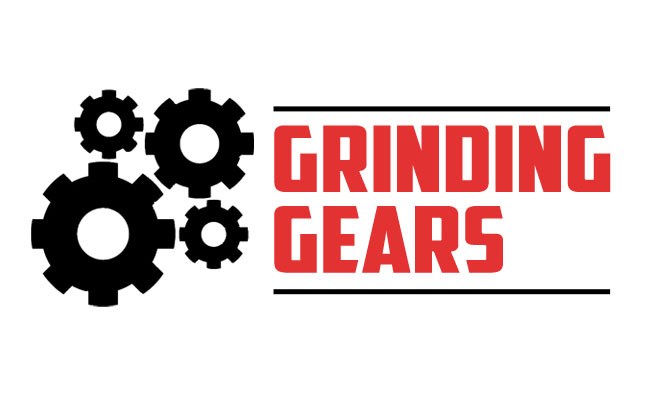This week, enthusiast website Brickset announced that further sets were inbound from Lego's popular Speed Champions series.
If you're a fan of the current breed of hypercars, you can already get a Porsche 918, Ferrari LaFerrari, or McLaren P1 rendered in blocky bricks. On the way is both more accessible fare like the Ford F-150 Raptor and Chevrolet Corvette, and purebred racing cars like the Porsche 917K Le Mans racer. Lego, as will no doubt be frustrating to those who grew up with it, has become a giant licensing and merchandising machine. You've been able to buy Lego Star Wars for some time, and these days can also buy sets featuring The Simpsons, Batman, and who knows what else. Currently, the biggest evidence of big brick shelling out is their Big Bang Theory playset, designed for adults instead of kids, faithfully recreating a deeply unfunny show.
But back to cars. The reason Lego is now the extremely successful purveyor of branded plastic interlocking bricks is that it changed strategies when its patent ran out. Where once buying a Lego set meant hours of play breaking it apart and reassembling it, now there's more of an assemble-and-display aspect. You build stuff, put it on a shelf, then buy more of it.
It seems cynical, but it has absolutely worked, turning the Danish toy company into a juggernaut of epic proportions. When the company launched a large-scale version of the Ferrari F40 supercar earlier this year, it seemed the perfect intersection of my two favourite childhood relics. I bought one, spent a couple of happy hours putting it together.
As a result of its exponential growth over the past few years, Lego has become the world's largest producer of tires. The little knobbly black rubber wheels first arrived in the 1970s, with wheeled sets arriving even earlier. Lego now puts out millions of rubber toy wheels, far more than many of the major tire companies combined.
And, if you look at the company's early history, this whole branding strategy isn't really a new thing at all. Some of Lego's earliest sets featured Shell Oil fuel stations, and a special HO-scale tanker trucks painted in the company's yellow and red livery. Few remember that this was Lego's original layout, or that they produced a series of toy cars much like Matchbox or Hot Wheels.
The Shell partnership with Lego is, or rather was, a half-century affair. Lego has recently announced a dissolution of the link-up, thanks to pressure from environmental groups concerned about drilling in the arctic. With an image to protect, Lego's kid-friendly brand didn't want to get oily fingerprints on its snow-white public persona. When Greenpeace released the clever Everything is Not Awesome video short on YouTube, featuring a rising tide of oil swamping a Lego arctic scene, they decided to pull the plug.
But not on the automaker side of things, not at all. Although, you have to wonder if it isn't the car manufacturers who are getting just as much out of these licensing experiments as Lego is.
Ferrari is extremely jealous about lending out its crest to other companies. Once the most powerful brand in the world, everybody knew what the prancing horse meant, even if they couldn't tell you what Testarossa meant. A Ferrari was something special, and that's all that mattered. Even now, roll up in a McLaren and the uninitiated will ask, "Is that some kind of Ferrari?"
Thanks to the Shell Oil angle, Ferrari and Lego first linked up with small F1 car sets you could buy at Shell service stations (Shell and Ferrari were F1 partners). There was an expansion to include full sets like the F1 Scuderia and team, and some larger, more complex models.
However, for the most part Lego stuck to standard-looking police cars and fire trucks for its city series of vehicles. With the success of Star Wars Lego, the game changed suddenly.
Lego is now one of the most powerful brands in the world, instantly recognizable from a single brick, the stylized logo, or even just the rattle of a cardboard box. People make everything out of them, and it's both a toy for the young and a modeling material for the young-at-heart.
As such, it's quite clever for manufacturers like Porsche and Audi to pursue a partnership like this. Hot Wheels is still a strong seller, but it's nothing like the looming presence of Lego. Get your brand into the youthful consciousness early, and you'll hopefully stay in their dreams long enough to sell them a car in a few years.
But it doesn't have to be as cynical as that. Most of the cars Lego is rendering in brick form are just plain cool, and being able to put them together yourself, using all the little tricks required to make blocky bricks approximate the curves and swoops of the modern automobile, is just plain fun.
There's something else though. Currently, my Lego F40 sits on a shelf gathering dust. That's of no use to anyone, and not what Lego is supposed to be about. When my eldest daughter gets a little older, we'll take it down, break it apart, and add it to a mountain of bricks. Maybe she'll build a house out of it. Maybe she'll build a 250GT SWB Breadvan. Either way, we'll be leaving the instructions still sitting on the shelf.
Brendan McAleer is a freelance writer and automotive enthusiast. If you have a suggestion for a column, or would be interested in having your car club featured, please contact him at [email protected]. Follow Brendan on Twitter: @brendan_mcaleer.



